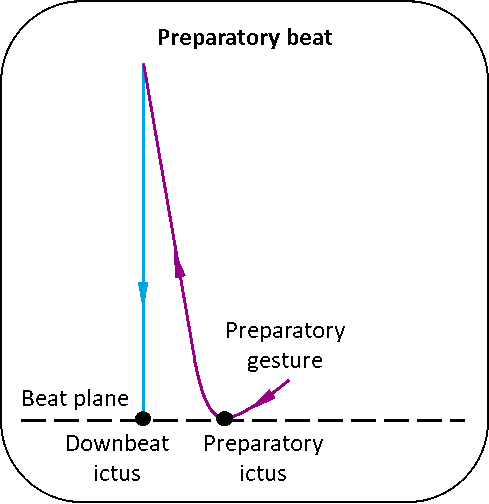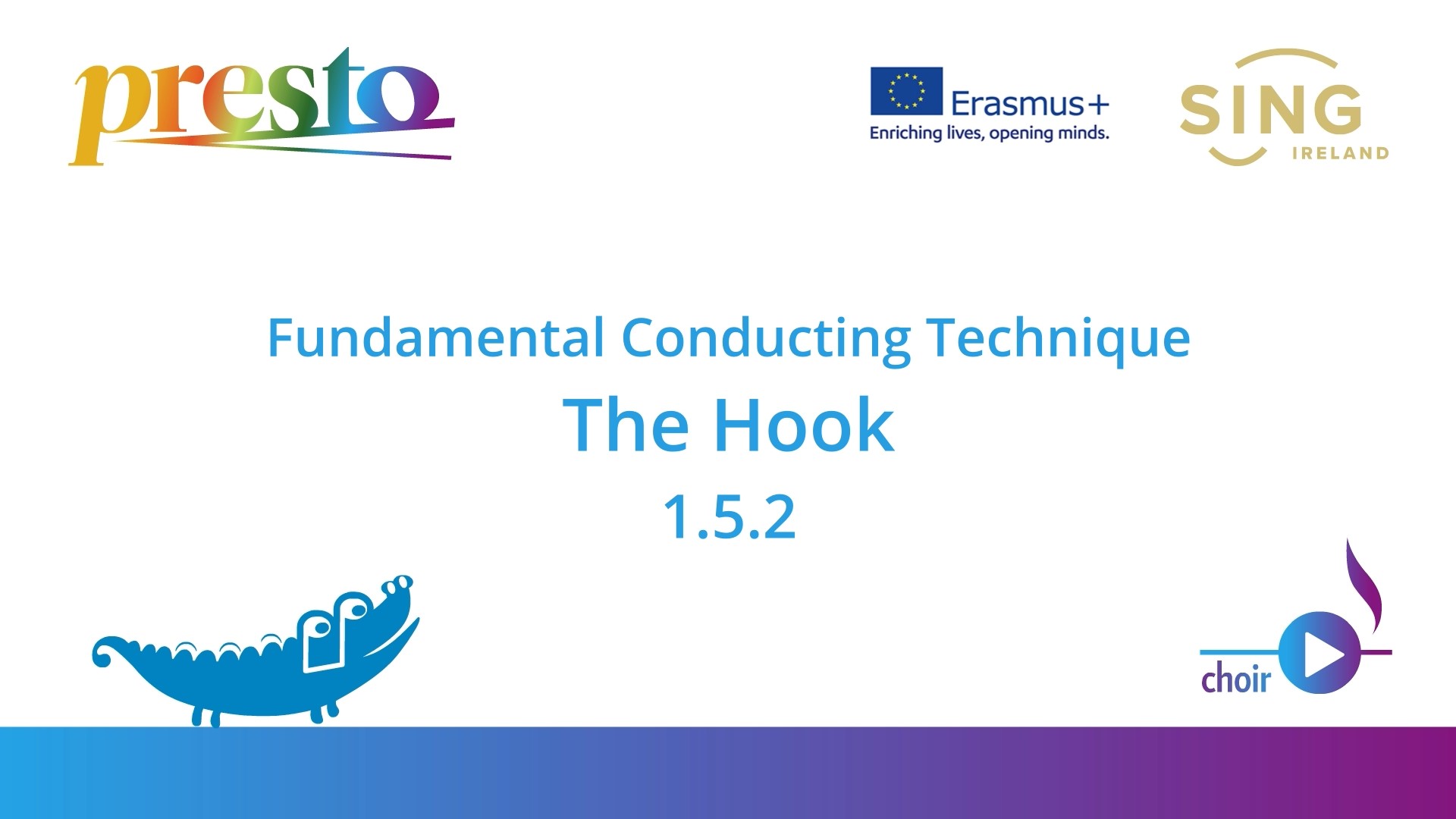The preparatory beat is the first movement you make to initiate the beginning of the music. It delivers two fundamental pieces of information to the musicians: 1) when to sing, and 2) how to sing.
When to sing
The conductor must ensure that the sound begins at an exact moment. This aspect of conducting therefore requires predictability. It is this special gesture which makes it possible, for example, for a massed choir and large orchestra to begin exactly together.
How to sing
The conductor's first gesture must also ensure that the performers begin in the exact same way: in other words, at the same tempo, with the same character, and at the same dynamic level.
The preparatory gesture is therefore critical. It recognises the fact that every musical sound is preceded by a preparatory motion: singers must breathe, string players must raise the bow, wind and brass players must breathe and prepare the lips, percussion players raise their sticks.
A useful general guideline is to give the previous beat as preparation. This beat must be at the same tempo as the music it introduces. This tempo needs to be very clear in the conductor’s head. Only then can your singers know where exactly to begin the sound.
Since it’s you who must establish the “time” of the music, and you are expressing time through the motion of your hands, how your hands start moving is critical. Imagine an initial ‘spark’ or mini explosion of energy that sets the music in motion (like a mini Big Bang that begins the ‘world’ of the music). This is an initial ictus.

Note: Which hand? These instructions, diagrams and videos are designed with a right-handed conductor in mind, or for conductors who are left-handed but who intend to conduct their beat patterns with the right hand. Anyone intending to conduct beat patterns with the left hand will need to imagine these resources in mirror-image.





